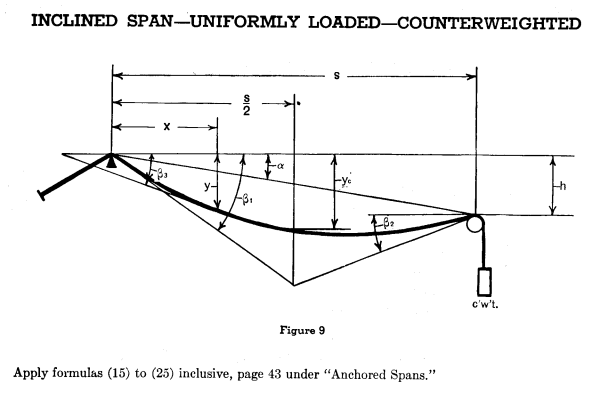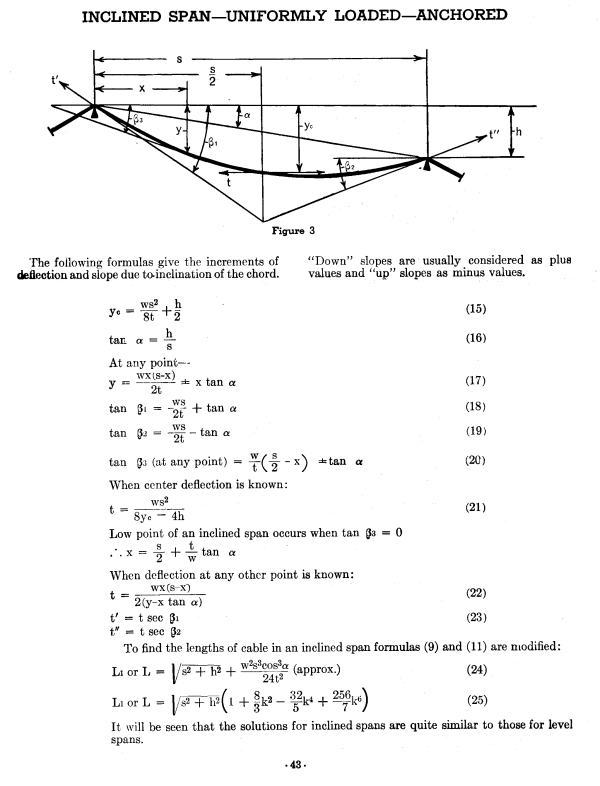Egnorant
Structural
- Aug 14, 2012
- 16
I am trying to model a communication (Telephone cable), in STAAD, strung between to points which are not at the same elevation. I know the properties of the cable (Area, Density, Modulus of Elasticity and initial tension at two ends under the self loading) but I don't know the sag and the cable length . I have used the "CABLE" element in the STAAD and was expecting that the cable will sag under its own weight and then I'll be able to get the maximum sag, but it seems that the "cable" element is not any different from truss element and it does not give any deflection under the self weight. Could somebody advise if there is any other way of modelling the cable and to find out the resultant sag, or could somebody suggest a good literature for hand calculations. I can only find literature for cables without initial tension and with ends at same elevations. Could somebody help. Thanks



![[idea] [idea] [idea]](/data/assets/smilies/idea.gif)
![[r2d2] [r2d2] [r2d2]](/data/assets/smilies/r2d2.gif)